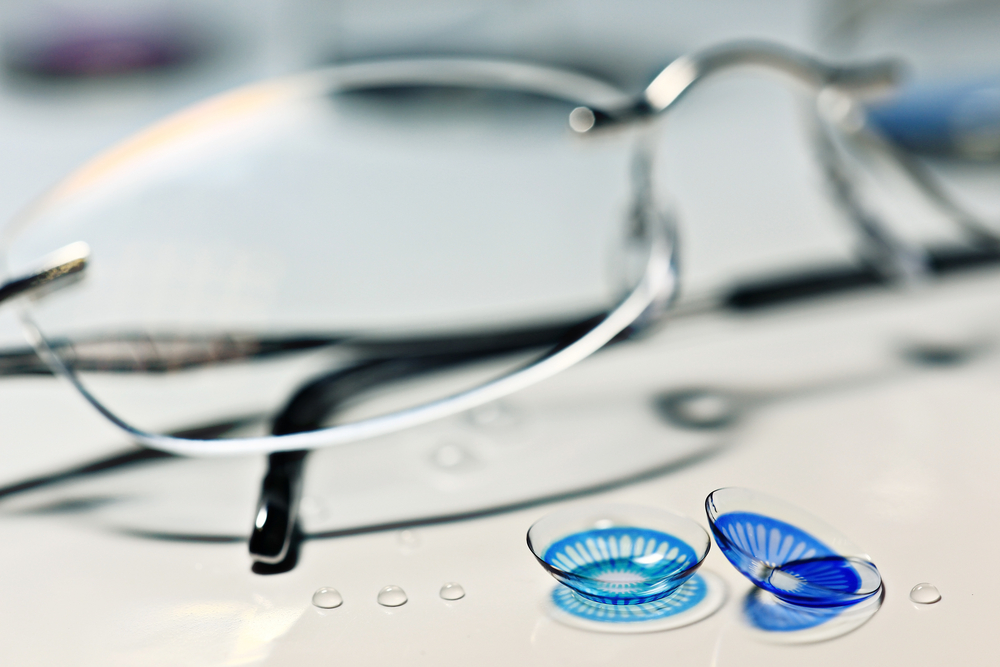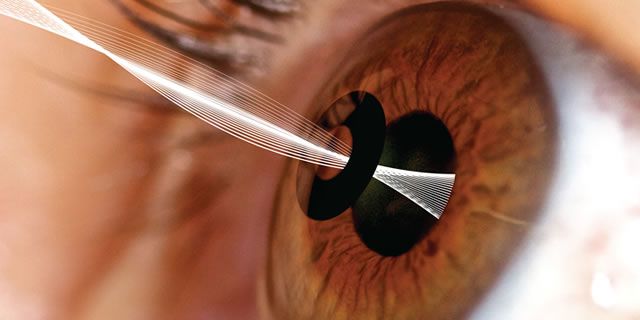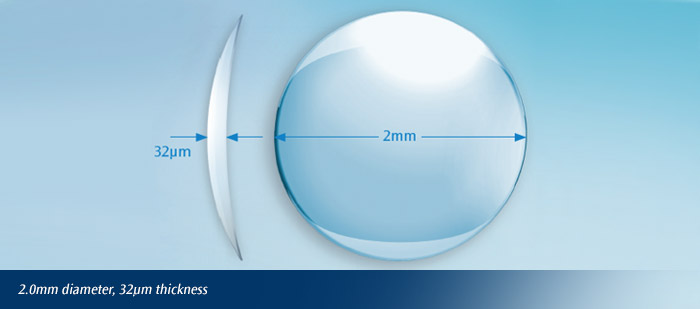LASIK and Monovision

Multifocal Lens Implant
Multifocal Intraocular Lens (IOL) have different ring zones to allow the patient to simultaneously see near and distant vision. Although these types of implants have been available for years, recent improvements in design have made them much more popular today.
The Multifocal IOL is suitable for patients who:
The Multifocal IOL is not suitable for patients who:

Multifocal lens implants are suitable for selected patients with cataracts and can help achieve total spectacle independence and may be the best treatment option for presbyopia and cataracts today.
Multi-Focal Contact Lens
A multifocal contact lens possesses several zones of differing power to assist the eye gradually as it changes focus on different objects at different distances. Therefore these lenses are designed to function well for seeing objects at a near, intermediate or far distance. Wearers of multifocal contact lenses are expected to need time to adjust to sorting out the different powers and to adjust to the lenses.
What’s available in Singapore?
For soft contact lens, only monthly disposable multifocal lenses are available. They are Bausch & Lomb Soflens Multifocal and CooperVision Proclear Multifocal. For rigid gas permeable presbyopic contact lens, both bifocal and multifocal types are available. The common ones are Renovation Multifocal, Boston Multivision and Menifocal Z lenses.

Spectacle Progressive Lenses
There are many methods to correct Presbyopia. The vast majority of presbyopes wear some types of spectacles. There are monofocal (reading glasses for near vision only), bifocal (for distance and near vision, separated by a visible horizontal line) and multifocal progressive spectacles (for distance, intermediate and near vision without a visible horizontal line).
Multifocal spectacles are also known as progressive addition lenses (PALs) that allows one to focus on objects through different prescriptions for different distances through the same lens. The top segment is for distant vision, the middle part for intermediate vision and the lower portion for near vision.

KAMRA™ Inlay
The new small wound pocket insertion KAMRA™ Inlay procedure is a safe and effective procedure to help restore everyday vision while maintaining distance vision.
The KAMRA™ Inlay is a mini-ring (3.8mm diameter and about 5 microns thin) with an opening in the centre, the pin-hole effect of the KAMRA™ Inlay (implanted in the non-dominant eye) uses the same principle as the camera lens to reduce the blur when viewing near objects, and to focus light rays to increase range of vision.

KAMRA Inlay implanted in the non-dominant eye
The KAMRA™ Inlay is inserted into the cornea of the eye. The corneal pocket, into which the micro-lens is placed, is created by a femto-second laser.
-
What can I expect during the surgery?
- First, numbing drops will ensure your absolute comfort duringthe 15 to 20 minute procedure. Second, your eye surgeon will create a microscopic opening on the surface of your cornea and implant the inlay.
-
Will my eye look different?
- The inlay is very discreet. It is significantly smaller than a contact lens and lighter than a grain of salt. Even in blue eyes, it is almost impossible for you or other people to detect.
-
How long until I notice an improvement?
- Your recovery time will vary from a few days to a few weeks or even months. The time it takes to restore everyday near vision depends on your individual healing time.
-
When can I resume normal activities?
- Most patients resume normal activities and return to work within 24 hours after the surgery. Will I still need my reading glasses?The goal of the inlay is to reduce your dependency on reading glasses. You may still need readers if you are working in dim light, performing a near task for a prolonged period of time or reading tiny print.
-
Is it normal to notice dimness?
- Yes, the inlay blocks a small amount of light from entering the eye, so an image in the KAMRA™eye may appear duller or darker compared to the non-implant eye. Avoiding closing one eye at a time to see the difference will make the dimness less noticeable until it resolves.

Corneal Inlays
Corneal Inlays are a special range of micro-devices placed within the cornea to offer correction for Presbyopia. The installation procedure for such inlays generally involves the creating of a flap or pocket in the cornea and inserting the inlay directly over the centre of the eye. Such inlays are constructed using biocompatible material and have the benefit of reversibility if necessary.

- Small-Aperture Inlays like the Kamra inlay by Acufocus aim to use a pin-hole opening in the centre of an opaque circular micro-disc to allow only focused light to reach the retina, offering a wider range of improved vision for all distances.
- Space-occupying Inlays like the Raindrop inlay by ReVision use a simple yet effective approach to manage presbyopia. As its name suggests, the space occupied by the inlay results in the raising of the cornea to create an overall steepening, offering a natural multifocal effect.
How do I decide which treatment option is best for me?
You should consult with your doctor to discuss all the treatment option. Every treatment option described above may have offered ideal results to some patients but they also have their drawbacks. It is important to weigh out the pros and cons of each treatment with your doctor in accordance to your individual lifestyle. For example, if you are an active person who enjoys sports and find it inconvenient to wear glasses, progressive spectacle lenses is probably not the ideal treatment for you. Essentially, there is not a one-size fits all treatment option for Presbyopia. At EEC, you can be assured that our doctors will recommend the most appropriate treatment option according to the needs and desires of each unique and individual patient.
